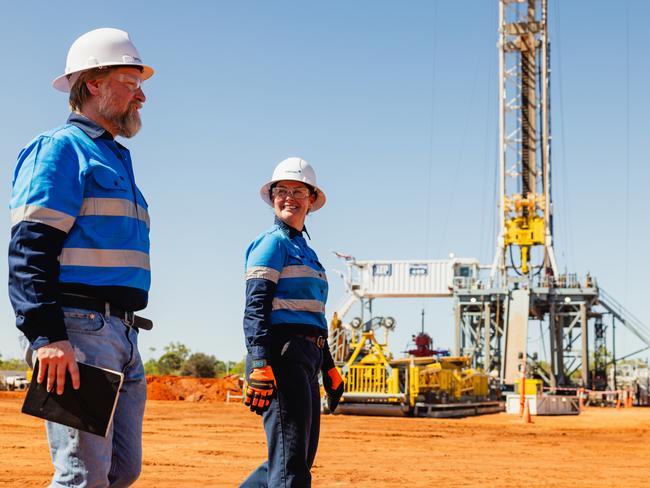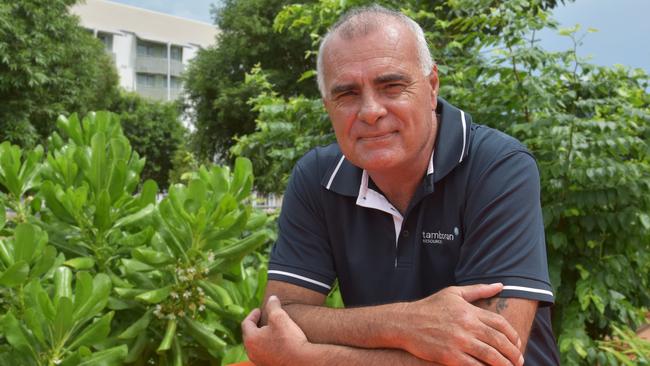Enough power for 400 years – the Beetaloo Basin holds the answer to Australia’s gas crisis
Aussie households could be forced to pay more for dirtier gas drilled overseas despite a giant outback deposit having enough reserve to power our nation for four centuries.
National
Don't miss out on the headlines from National. Followed categories will be added to My News.
Households could be forced to pay more for dirtier gas drilled overseas despite the Northern Territory’s Beetaloo Basin holding enough reserve to power Australian homes for 400 years.
The nation’s east coast will face a shortage of gas in about two years that could last for decades as domestic production is blocked by activist lawfare, green tape and regulatory uncertainty.
Gas company Tamboran is preparing to start drilling in the Beetaloo Basin, about 825km north of Alice Springs, that contains at least 500 trillion cubic feet of natural gas.
APA Group chief executive officer Adam Watson said the proposed project looked like the most promising solution to the east coast’s looming gas shortfall but said he was concerned works would be delayed by possible legal and environmental challenges.
“It (Beetaloo) seems to have low cost and low emissions gas which is really attractive and there is the capacity to build the necessary pipeline infrastructure to bring that to market,” he said.
“My concern is that hurdles may get put up in front of that project in the next year or two.”

A gas project by Santos in Narrabri in NSW has been delayed for over a decade. In September the gas company was granted approval to undertake key works after being cleared by an independent report of coercing landowners.
Last week the Federal Court ordered the Environmental Defenders Office pay $9m in legal costs after finding EDO coached Tiwi Islanders when bringing legal action in a bid to prevent Santos building a gas pipeline in the Timor Sea.
Australian Energy Producers chief executive Samantha McCulloch said activist groups were using lawfare to block critical new gas supply projects and said governments should be clearing hurdles to new gas projects in a bid to prevent a shortage.
“Victoria and NSW are sleepwalking towards a gas supply cliff that will mean higher energy prices, increased risks of blackouts and loss of manufacturing jobs,” she said.
“At a time when Australians are facing cost-of-living pressures, governments should be doing everything they can to remove barriers to new gas supply and ensure reliable and affordable energy.”
The NT government last year greenlit applications for onshore gas exploration after earlier lifting a years-long ban on unconventional shale gas developments, also called fracking.
The Territory government had earlier implemented all 135 recommendations from the 2018 Pepper inquiry, which found the industry risks of fracking could be managed if the recommendations were implemented.
Tamboran Resources chief executive officer Joel Riddle said gas from the Beetaloo Basin was comparably low carbon compared to other types of gas and could play a valuable role in Australia’s transition to renewable energy.
“Tamboran’s NTLNG facility and Beetaloo development will safeguard Australia’s domestic energy future as we transition to a cleaner, low emissions energy grid, and to create local economic opportunities for traditional owners, landholders, and the wider community,” he said.

Tamboran regional relationships manager Russell Jeffrey liaises with the dozen or so native title holders across the 28,000 square kilometres of the Beetaloo Basin and manages concerns around environmental and heritage risks.
Mr Jeffrey said his work including scouting programs with native title holders and archaeologists that had uncovered significant items such as spearheads and grinding stones.
“There’s sacred sites there (Beetaloo Basin),” he said.
“They get identified and once they’re identified, there’s a process to go through to ensure that place is not disturbed. So you can’t go driving through there to have a look, you just go into what they call the zone.”
The Beetaloo Basin will be the only gas basin in the world subject to Net Zero scope one emissions and has a carbon dioxide reservoir of 3-4 per cent, which is much lower than the 15 per cent of the Cooper Basin.



